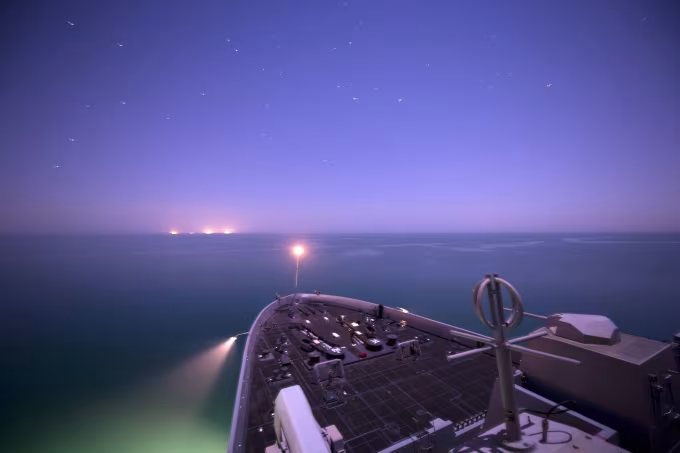The United States military is sending over 4,000 Marines and sailors to the waters surrounding Latin America and the Caribbean in an intensified bid to confront drug cartels, two U.S. defense officials told CNN.
The significant buildup, involving the Iwo Jima Amphibious Ready Group and the 22nd Marine Expeditionary Unit, offers President Trump an expanded set of military options should he choose to take direct action against cartel operations.
The move, which has not been previously disclosed, is part of a three-week repositioning of U.S. assets into the U.S. Southern Command area of responsibility, according to one official.
Alongside the Marines, a nuclear-powered attack submarine, P-8 Poseidon reconnaissance aircraft, several destroyers, and a guided-missile cruiser are also being deployed to bolster the mission.
A third source familiar with the plan said the buildup is “aimed at addressing threats to US national security from specially designated narco-terrorist organizations in the region.”
The U.S. Navy confirmed Friday that the USS Iwo Jima, the 22nd MEU, and two other ships in the ARG, the USS Fort Lauderdale and USS San Antonio, had deployed, though their destinations were not specified.
One defense official stressed that the current military presence is largely a strategic show of force rather than an immediate signal of precision strikes against cartels.
Still, the ARG/MEU’s aviation combat element gives commanders and the president a wide array of operational choices.
The deployment has sparked unease among some defense officials, who note that Marines are not typically trained for drug interdiction or counter-trafficking missions. In such scenarios, they would need to work closely with the U.S. Coast Guard.
MEUs, however, have played crucial roles in large-scale evacuation operations before, including an extended stationing in the eastern Mediterranean during heightened tensions involving Israel, Hamas, and Iran.
A Marine official told CNN the MEU “stands ready to execute lawful orders and support the combatant commanders in the needs that are requested of them.”
This is not the first recent show of military might in the region. In March, U.S. Northern Command positioned destroyers near the U.S.-Mexico border to strengthen border security and reinforce America’s presence in the western hemisphere.
However, the latest deployments will fall under SOUTHCOM and are expected to remain for several months.
Earlier this year, CNN revealed a memo signed by Defense Secretary Pete Hegseth declaring the U.S. military’s “foremost priority” to be defending the homeland.
The directive called for sealing borders, countering “unlawful mass migration, narcotics trafficking, human smuggling and trafficking, and other criminal activities,” and coordinating deportations with the Department of Homeland Security.
The same memo also urged Pentagon leaders to provide “credible military options” to safeguard unrestricted U.S. access to the Panama Canal.
